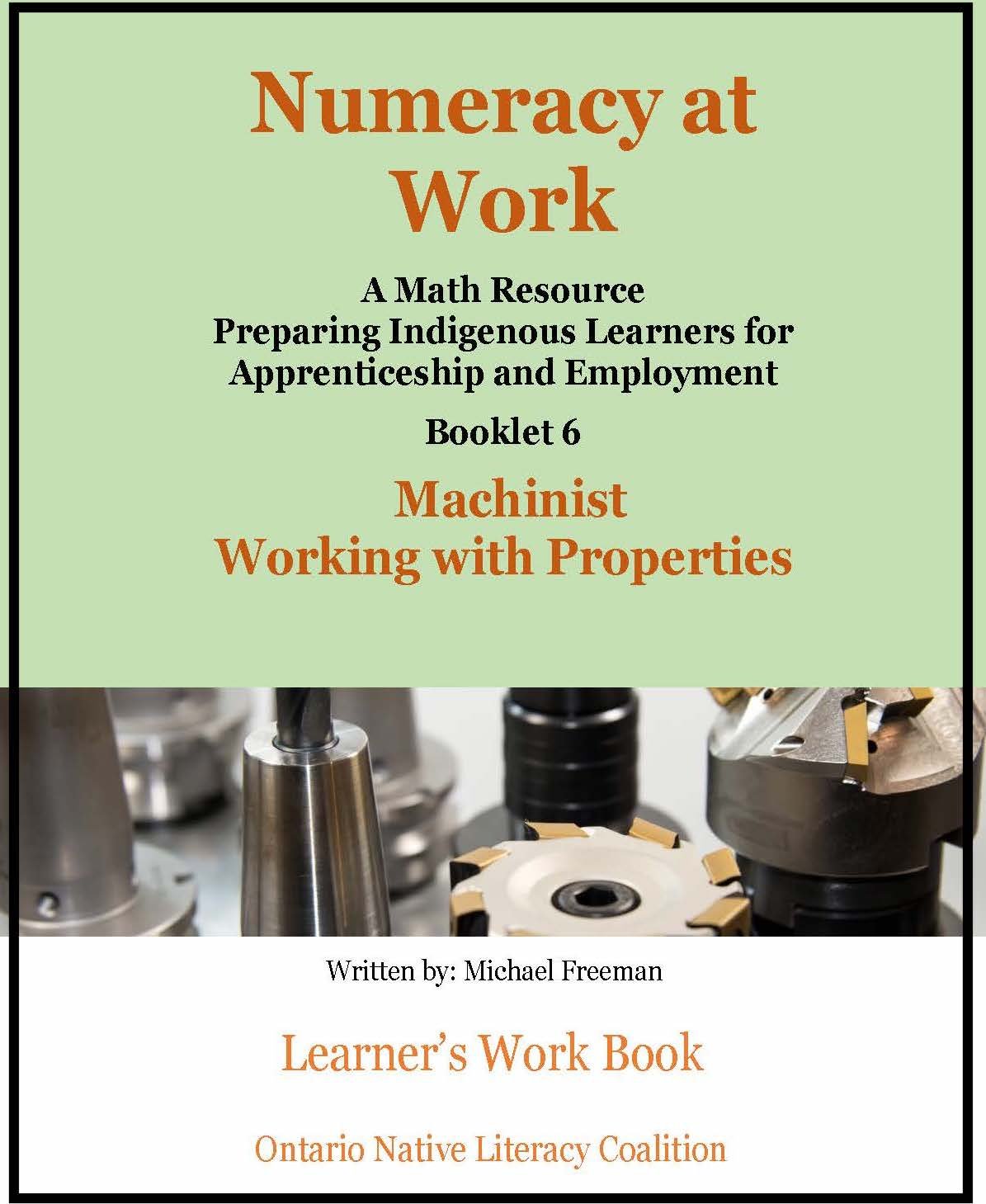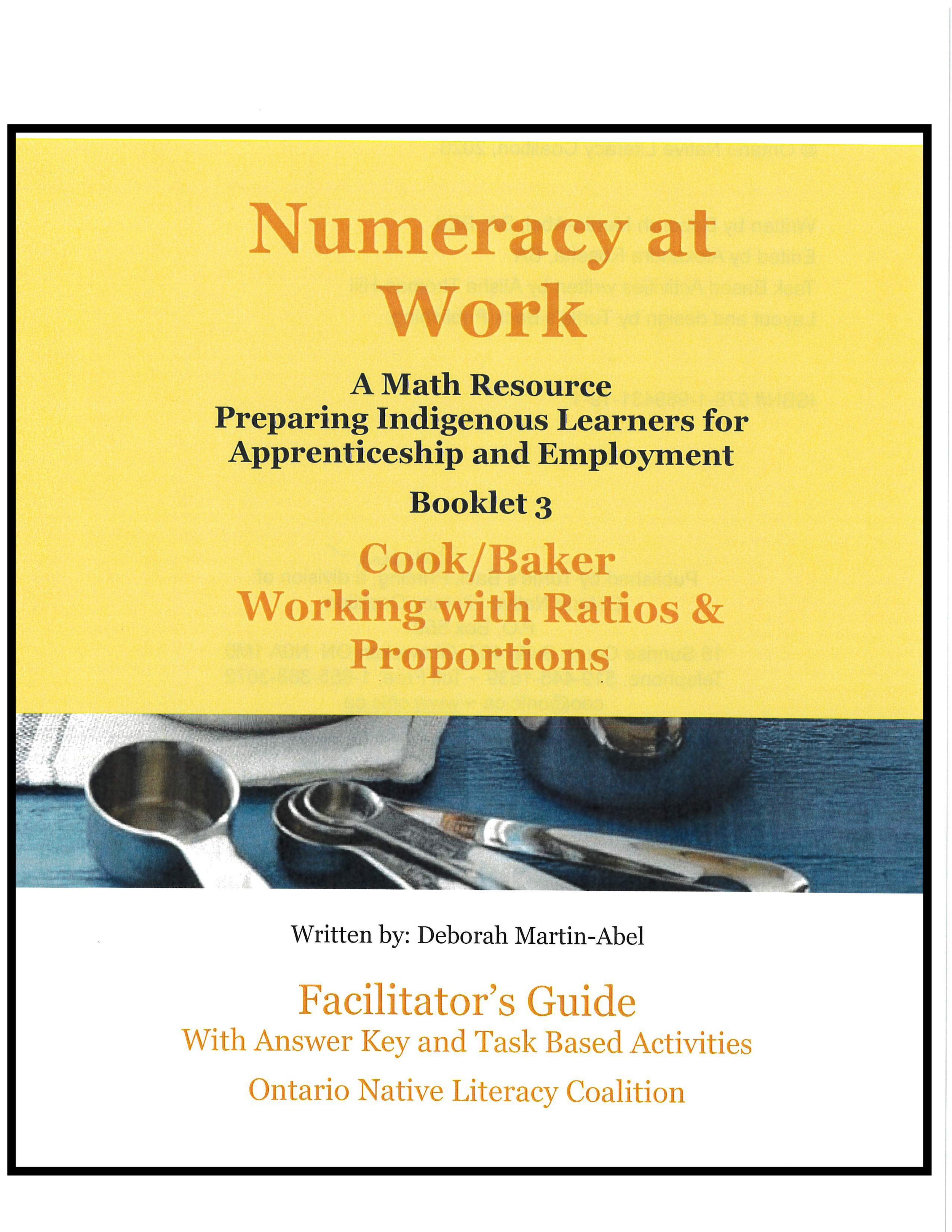Machinist: Working with Properties, Learner's Work Book
Preparing Indigenous learners for Apprenticeship and Employment
The booklets are designed for learners entering an apprenticeship program or preparing for the workforce. Learners are encouraged to complete a booklet in a career they are interested in or they could try all the booklets to investigate what careers interest them. Every booklet concentrates on math concepts and skills needed in a chosen career.
The OALCF are the guidelines used to establish math concepts and skills at Level 1 and Level 2, as some career paths are more advanced learning of math concepts.
Booklet 6
Numeracy at Work
Machinist-Working with Properties: Learner’s Work Book – Includes task-based activities
Machinists use measurements such as fractions and decimals and must understand linear measurement along with radius and circumference of circles.
A machinist may work with all different types of materials. Most commonly are steel, aluminum, brass, copper, various alloys and occasionally will work with plastic, rubbers, and glass.
Booklet includes:
· Task-based Activities
This Learner’s Work Book accompanies the Numeracy at Work – Machinist – Working with Properties- Facilitator’s Guide.
Preparing Indigenous learners for Apprenticeship and Employment
The booklets are designed for learners entering an apprenticeship program or preparing for the workforce. Learners are encouraged to complete a booklet in a career they are interested in or they could try all the booklets to investigate what careers interest them. Every booklet concentrates on math concepts and skills needed in a chosen career.
The OALCF are the guidelines used to establish math concepts and skills at Level 1 and Level 2, as some career paths are more advanced learning of math concepts.
Booklet 6
Numeracy at Work
Machinist-Working with Properties: Learner’s Work Book – Includes task-based activities
Machinists use measurements such as fractions and decimals and must understand linear measurement along with radius and circumference of circles.
A machinist may work with all different types of materials. Most commonly are steel, aluminum, brass, copper, various alloys and occasionally will work with plastic, rubbers, and glass.
Booklet includes:
· Task-based Activities
This Learner’s Work Book accompanies the Numeracy at Work – Machinist – Working with Properties- Facilitator’s Guide.
Preparing Indigenous learners for Apprenticeship and Employment
The booklets are designed for learners entering an apprenticeship program or preparing for the workforce. Learners are encouraged to complete a booklet in a career they are interested in or they could try all the booklets to investigate what careers interest them. Every booklet concentrates on math concepts and skills needed in a chosen career.
The OALCF are the guidelines used to establish math concepts and skills at Level 1 and Level 2, as some career paths are more advanced learning of math concepts.
Booklet 6
Numeracy at Work
Machinist-Working with Properties: Learner’s Work Book – Includes task-based activities
Machinists use measurements such as fractions and decimals and must understand linear measurement along with radius and circumference of circles.
A machinist may work with all different types of materials. Most commonly are steel, aluminum, brass, copper, various alloys and occasionally will work with plastic, rubbers, and glass.
Booklet includes:
· Task-based Activities
This Learner’s Work Book accompanies the Numeracy at Work – Machinist – Working with Properties- Facilitator’s Guide.






